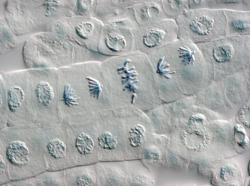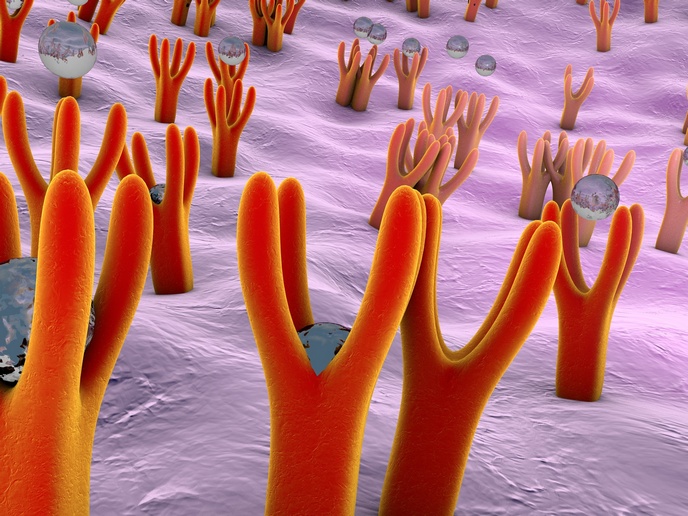Understanding cell division
Mitosis is a very complicated and tightly regulated process. Understanding the regulatory mechanisms and the substances involved is important to elucidating mechanisms of ageing, of certain disease states and of general processes of growth and repair. During mitosis, a structure called a spindle is formed in the cell. Imagine the cell as a water balloon with microscopic railroad tracks running inside the balloon from one ‘pole’ to the other. These tracks represent the so-called spindle fibres, which guide the migration of chromosomal material to opposite ends of the cell in preparation for the final step of cell division, such that each daughter cell will have a copy of the original DNA. In order to move along the spindle fibres, the chromosomal material must be attached or tethered in a complex process involving numerous biochemical and structural mechanisms. One of the protein complexes important to the process is the RZZ, named for its components Rod, Zwilch and Zw10. The ‘Structural and functional characterization of the RZZ complex’ (RZZ) project was designed to determine the cellular mechanisms for the role of RZZ in integrating signals from the attachment machinery used to separate chromosomal material during mitosis. One of the important findings of the project is that the RZZ complex shares a common ancestry with certain vesicle tethering machinery limited to the animal kingdom, or metazoans. In addition, the researchers managed to express the Rod component in insect cells and to purify the native RZZ complex from human cells, enabling scaling up of the expression and purifying enough material for subunit mapping and electron microscopic investigation of structure. Phosphorylation (the addition of a phosphate group) via substances called kinases is a ubiquitous biochemical process in cells. Results from the RZZ project suggest a role for phosphorylation in the regulation of RZZ interactions with other proteins involved in the spindle attachment process. In summary, the RZZ project resulted in successful isolation of the RZZ complex from human cells and a better understanding of regulatory mechanisms involved in cell mitosis. The findings have important implications for targeted therapies aimed at stopping the uncontrolled cell division associated with cancer.







